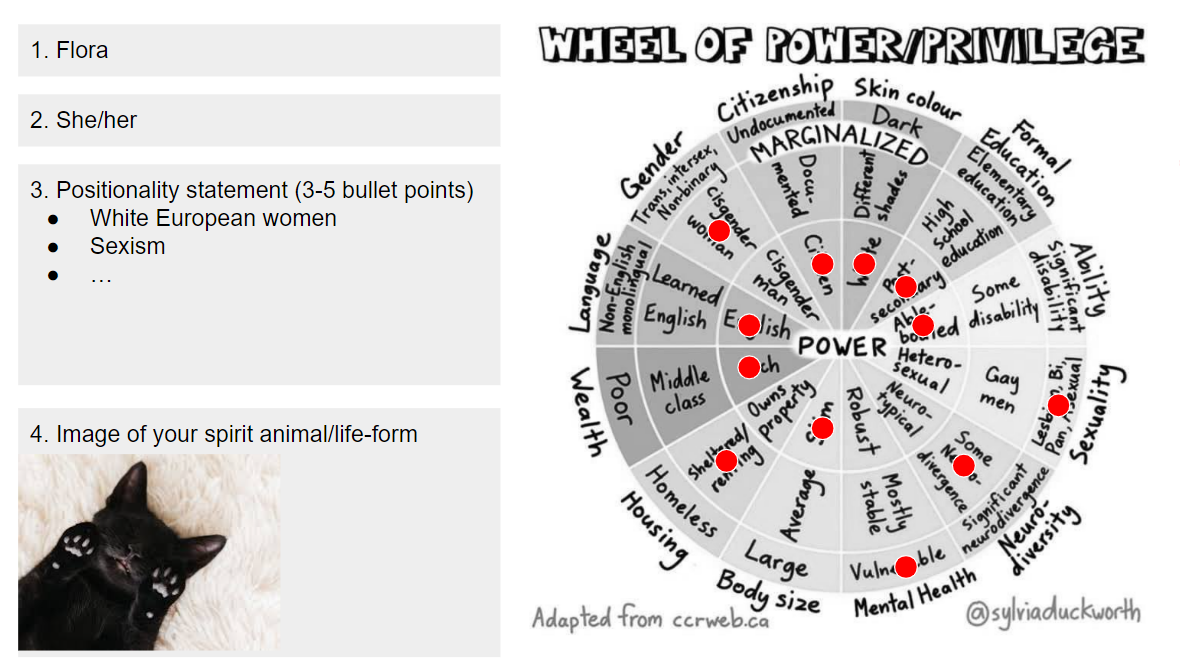
Reflections climate change seminar:
In this reflection, I aim to explore the impact of our existing models of economic growth and information accessibility on the daily rhythm of our lives. Our world is marked by a continuous expansion of information access each year, driven by disruptive technological advancements, the prevalence of polycrisis, and the widening gap in financial inequalities. The extent to which individuals are exposed to these factors varies based on their social backgrounds, yet we all share the same overwhelming feeling.
In our seminar focused on 'time,' we delved into the observation that contemporary human existence is characterised by an accelerated pace that often conflicts with the natural rhythms of the planet and its ecosystems. Exploring paths to realign with a more balanced tempo, similar to the traditional practices of indigenous cultures, could provide a potential framework for transitioning away from the constant feeling of powerlessness.
My own reflection on growth in architecture and the creative design world:
Embarking on my journey in interior architecture, I was struck by the demanding pace at which we were expected to produce documents and projects. This constant pressure left little room for thorough assimilation of theory or the chance of testing ideas with the margin for mistakes. The conventional education system and construction industry operate within tight constraints—ranging from time and financial limitations to legal requirements, client expectations, stakeholder demands, market competition, and fleeting design trends.
It feels as though we are constructing at a pace that outstrips our capacity for thoughtful reflection. There's a noticeable disconnection between the materials we use, the craftsmanship invested, and how the final product is commercialised. During the seminar, we saw a graph that showed that in 2020, anthropogenic mass surpassed the weight of the entire global living biomass. As someone involved in the construction industry, this realisation prompts contemplation about my role and values concerning these production methods in the future.
During the design dialogues, I asked an interior architect about her greatest regret within the contemporary construction system. Her candid response highlighted the inherent expiration date of many projects, particularly stores, flagship outlets, and coworking spaces. Built on a business model favoring flexibility and adaptability, these structures contribute to a culture of disposability and extraction, often sidelining considerations of long-term sustainability and durability.
The paradoxes extend to material choices, where clients often demand extremely durable materials that must be produced swiftly, installed easily, and exhibit exceptional resistance. This seems incongruous when applied to spaces intended to operate for merely a decade or so.
In essence, the complexities and entrenched systems within the construction industry seem daunting to untangle and rectify. However, given that the buildings and construction sector accounts for a substantial 37% of global emissions, addressing sustainability is imperative. That’s why I think it is important to introduce new models, drawing inspiration from ancient\traditional knowledge, regenerative materials, inter-species collaboration, and a concerted effort to minimise unnecessary extractions and productions.
https://www.unep.org/resources/report/building-materials-and-climate-constructing-new-future#:~:text=The%20buildings%20and%20construction%20sector,staggering%2037%25%20of%20global%20emissions.
Ethics and Nature, Robin Kimmerer:
In the past, the indigenous world explained that matter and spirit were fused.
Honorable harvest: woods
- Never take the first one, restrain yourself and look for others of the same species, it could be the last one ever
- Ask permission and speak to the organism before picking it, act with respect
- When the question is asked and the answer is no, go home empty-handed
- Benefit growth of plants (Simon Pokagon)
- Take only what you need and no more
- Be grateful
- Reciprocate the gift
Fostering a deeper connection with the natural world necessitates a heightened awareness and mindfulness towards the plant life that coexists with us. In urban settings, the act of gathering plants may not be prevalent, yet a profound respect for the living organisms that share our environment remains crucial. The detachment we experience in cities, perhaps due to the displacement of consequences, obscures the direct impact of our actions.
Envisioning an application of the principles of the honorable harvest in an urban context could involve refraining from plucking or taking care not to walk upon the small patches of greenery within cities. It might also entail the establishment of parks designed not exclusively for human use but with consideration for the number of other inhabitants of our urban landscapes. Additionally, adopting practices such as refraining from littering and conscientiously managing our waste, being aware of what we put in our drains, contributes to this ethic.
Expressing gratitude for the nature that surrounds us—whether it be the sea, mountains, or rivers—forms another dimension of this approach. These seemingly small gestures collectively constitute a framework for cultivating relationships of respect with nature within the city we inhabit.

What is the first memory of you realising climate change?
Books, articles, documents, videos, and art pieces:
Critical positivity
Why so much is going on at the same time (article to read)
ION (article to read)
The intersectional environmentalist (Leah Thomas)
The Everything Manifesto (document to read)
“blind men appraising an Elephant” (Onahara Donashu)
Jevons paradox
The case for degrowth
Honourable Harvest, Ethics & Nature (Robin Kimmerer)
The secret to talking about climate change
No Code Website Builder